ESA’s Space Environment Report 2022
Non-EO
ESA
Quick facts
Overview
| Mission type | Non-EO |
| Agency | ESA |
| Launch date | 22 Apr 2022 |
| End of life date | 22 Apr 2022 |
ESA’s Space Environment Report 2022
April 22, 2022: Our planet is surrounded by spacecraft carrying out important work to study our changing climate, deliver global communication and navigation services and help us answer important scientific questions. 1)
But their orbits are churning with deadly fragments of the past – fast-moving pieces of defunct satellites and rockets trapped in orbit – that threaten our future in space.
In 2002, the Inter-Agency Debris Coordination Committee (IADC) published the Space Debris Mitigation Guidelines. The measures described in the guidelines set out how to design, fly, and dispose of space missions in ways that prevent the creation of further debris. They were a major step for the protection of our important orbits and have served as the baseline for space policy, national legislation and technical standards for two decades.
Since 2016, ESA’s Space Debris Office has published an annual Space Environment Report to provide a transparent overview of global space activities and determine how well these and other international debris-reduction measures are improving the long-term sustainability of spaceflight.
Here are some of the key findings of the 2022 report.
In-depth
• More satellites are being launched today than ever before.
• This is driven by the increasing number and scale of commercial satellite constellations in low-Earth orbit.
• Most, but not all, rocket bodies launched today are safely placed in compliant disposal orbits or removed from low-Earth orbit before they can fragment into clouds of dangerous debris.
• But active satellites today still have to dodge out of the way of objects that were launched decades ago and have since broken into fragments.
• Not enough satellites are removed from heavily congested low-Earth orbits at the end of their lives.
• Technological advances are improving our ability to spot and track smaller fragments of space debris.
• Our behaviour in space is improving but is still unsustainable in the long term.
More than 30,000 Pieces of Space Debris Spotted
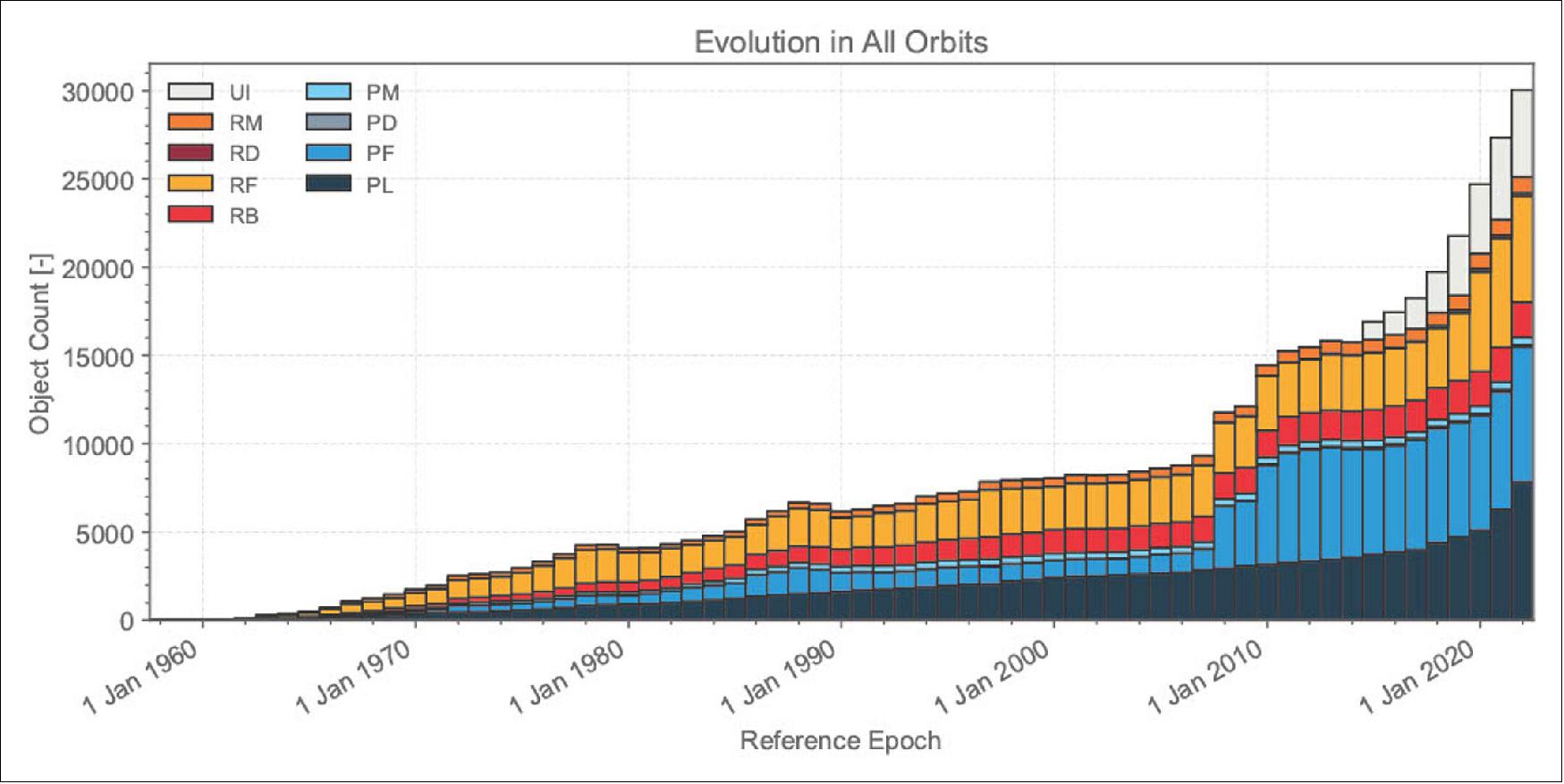
The amount of space debris in orbit continues to rise. — More than 30,000 pieces of space debris have been recorded and are regularly tracked by space surveillance networks. As our technology improves, we are spotting an increasing number of unidentified objects (UI). Due to the time elapsed between their creation and our observation, it is difficult to trace their origins to a specific “fragmentation event”.
Smaller Satellites; Larger Constellations
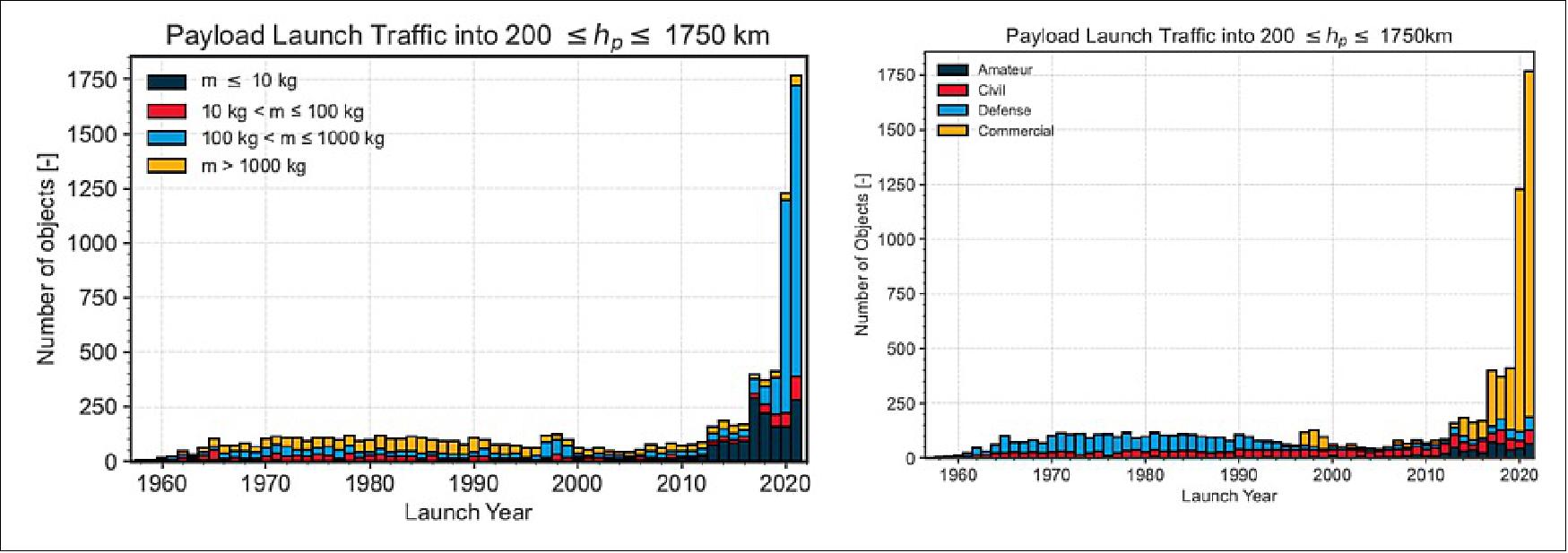
The 2020s have marked the beginning of a new era in spaceflight. The technology required for large satellite constellations has quickly become more reliable and compact. As a result, the last two years has seen an enormous increase in the number of commercial satellites launched to near-Earth space, with the vast majority being smaller satellites weighing between 100 - 1000 kg.
Many of these constellations are launched to provide communication services around the globe. They have great benefits, but will pose a challenge to long-term sustainability.
More Satellites are Sharing a Ride
Constellations are also changing the way satellites get into space. 2021 saw a record number of rockets carrying multiple satellites into orbit at the same time. This reduces the launch cost per satellite, but often makes it more difficult for surveillance networks to spot and keep track of individual objects.
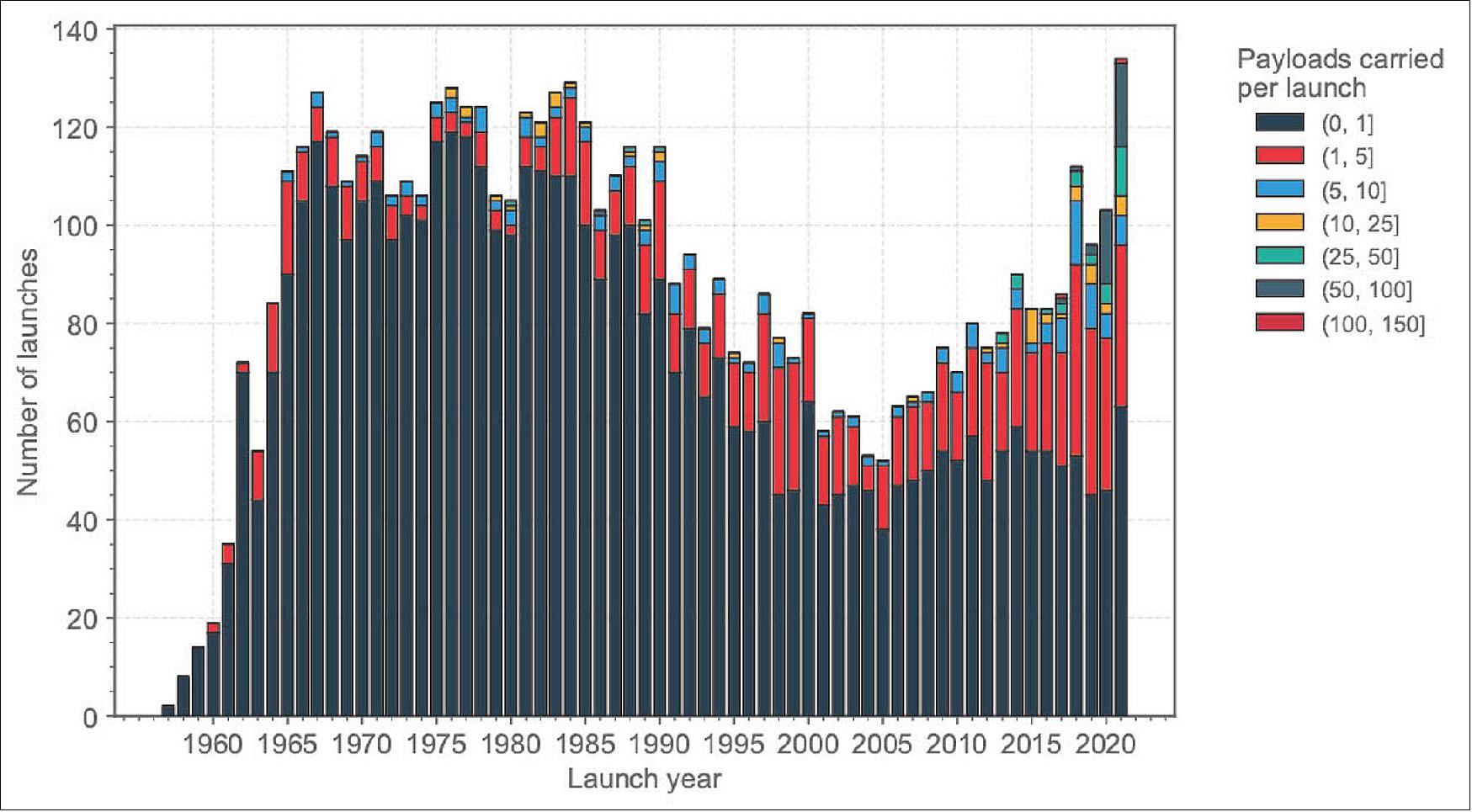
Low-Earth Orbit is Getting Crowded
The increase in launch traffic and the long-lasting nature of space debris in low-Earth orbit is causing a significant number of close encounters, known as "conjunctions", between active satellites and other objects in heavily congested orbits.
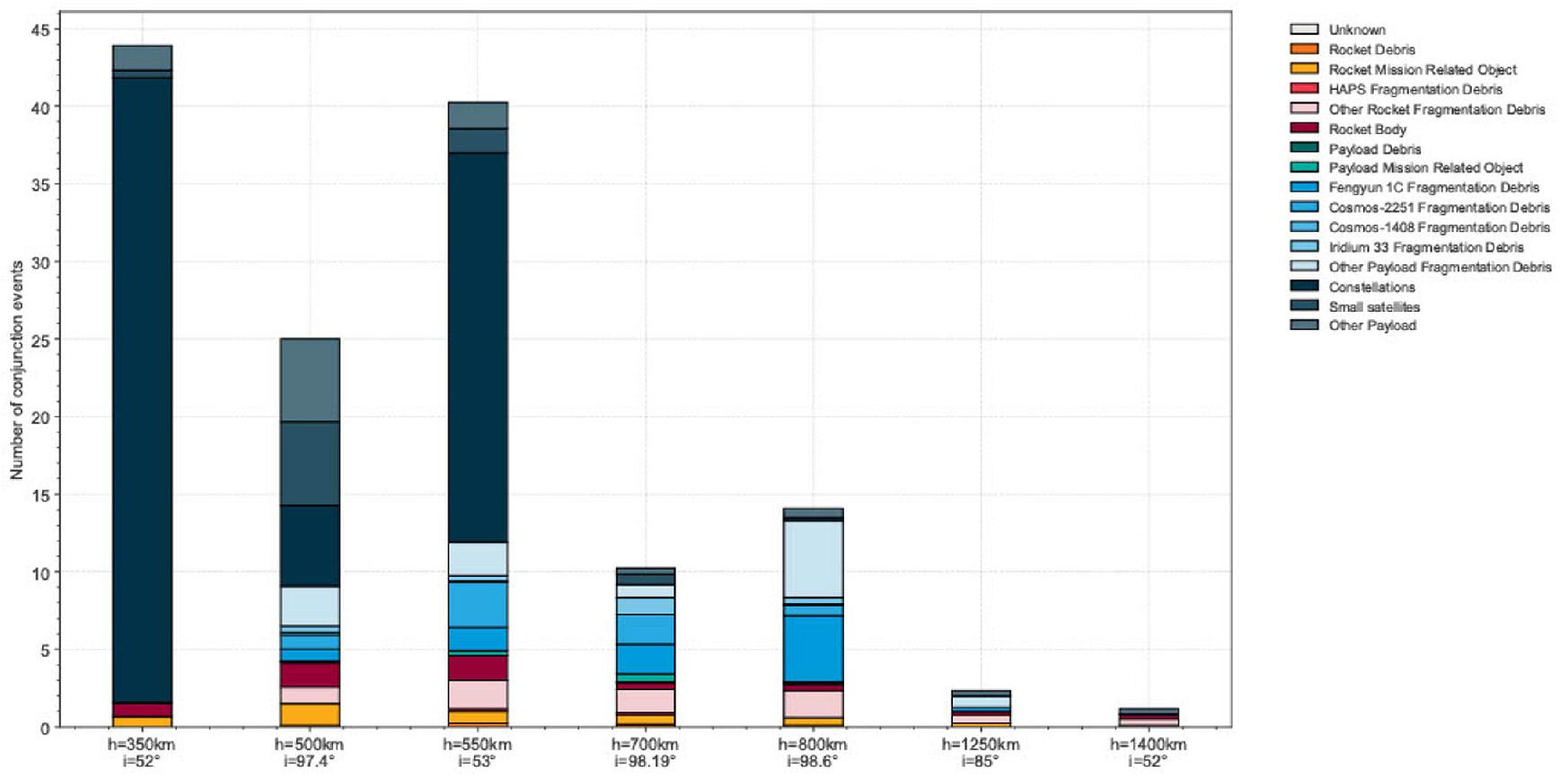
We are Making Progress in Some Areas
One positive note for the debris environment is that many rocket bodies launched today to deliver satellites into low-Earth orbit are disposed of sustainably. Some are burned up using a “controlled reentry” into Earth’s atmosphere, while others are placed in orbits that naturally decay within 25 years.
Rocket bodies are the largest objects we send to space and their removal from busy orbital highways reduces the chance they explode or fragment into many pieces of dangerous debris.
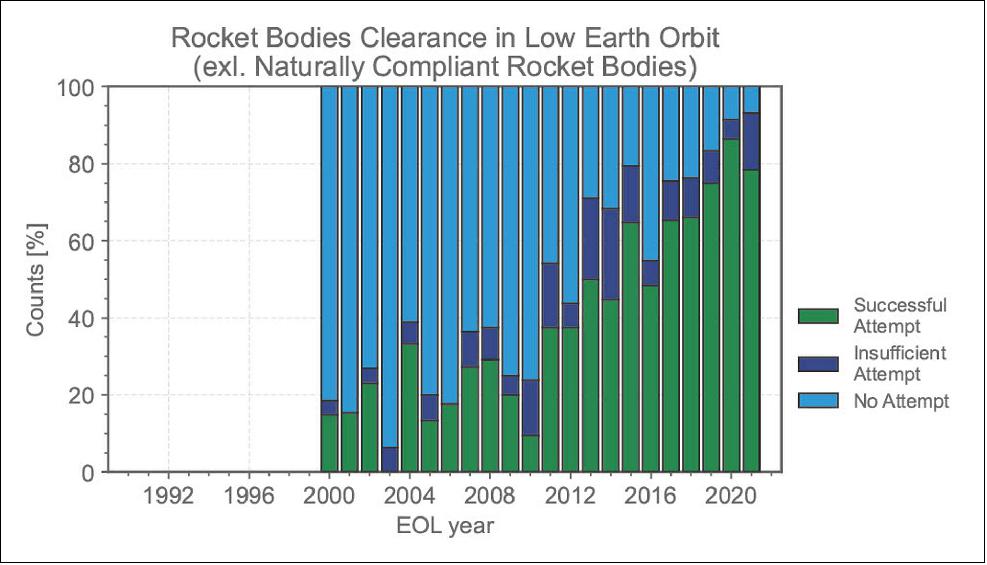
An increasing number of satellites reaching the end of their mission in low-Earth orbit are being disposed of responsibly, but there is still work to be done. An increasing percentage of disposal attempts are successful, but too many are left drifting in important orbits with no attempt made to remove them.
A successful removal rate of at least 90% for all types of space object is required to limit the growth rate of space debris, before we can start cleaning it up.
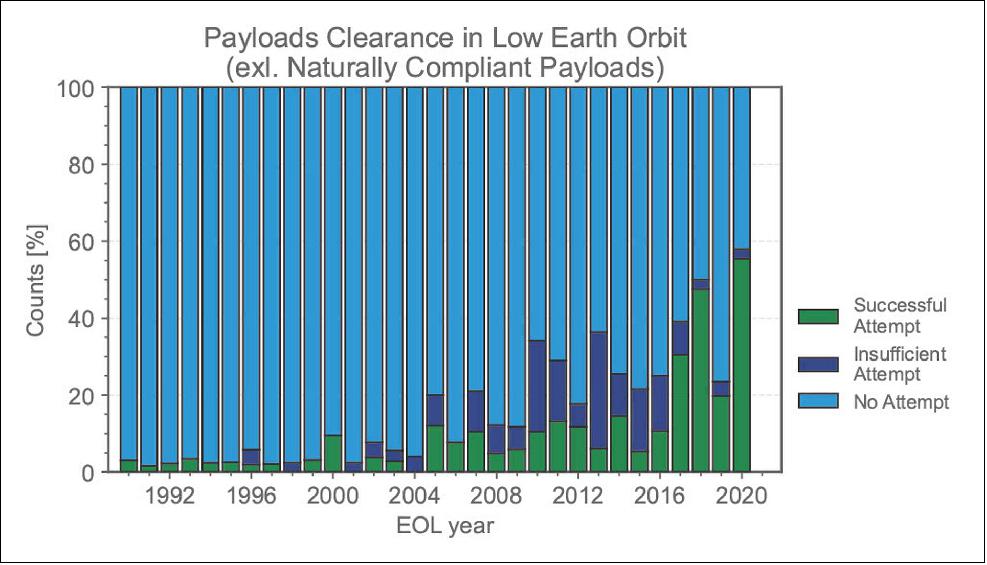
But we Need to do More
While we may be more responsible with what we launch today, our current efforts are not enough.
If we don’t significantly change the way we use launch, fly and dispose of space objects, an “extrapolation” of our current behaviour into the future shows how the number of catastrophic in-space collisions could rise.
Long term, this could lead to “Kessler Syndrome”, the situation in which the density of objects in orbit is high enough that collisions between objects and debris create a cascade effect, each crash generating debris that then increases the likelihood of further collisions. At this point, certain low-Earth orbits will become entirely inhospitable.
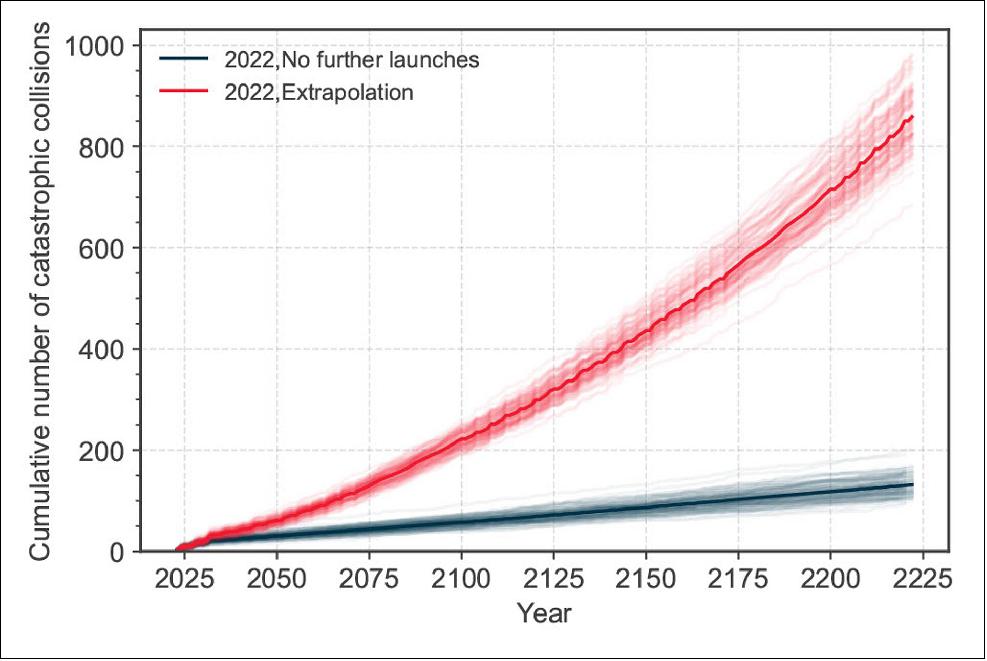
While we may be more responsible with what we launch today that we used to be, our current efforts are not enough.
If we don’t significantly change the way we use launch, fly and dispose of space objects, an “extrapolation” of our current behaviour shows how the number of catastrophic in-space collisions could rise.
Long term, this could lead to the “Kessler Syndrome”, the situation in which the density of objects in orbit is high enough that collisions between objects and debris create a cascade effect, each crash generating debris that then increases the likelihood of further collisions. At this point, certain low-Earth orbits will become entirely inhospitable.
The most effective way to avoid this situation is for more space actors to follow the IADC’s space debris mitigation guidelines – doing more to prevent in-orbit explosions, avoid in-orbit collisions, and dispose of spacecraft safely at the end of their mission.
References
1) ”ESA’s Space Environment Report 2022,” ESA Safety & Security, 22 April 2022, URL: https://www.esa.int/Safety_Security/Space_Debris/ESA_s_Space_Environment_Report_2022
The information compiled and edited in this article was provided by Herbert J. Kramer from his documentation of: ”Observation of the Earth and Its Environment: Survey of Missions and Sensors” (Springer Verlag) as well as many other sources after the publication of the 4th edition in 2002. - Comments and corrections to this article are always welcome for further updates (eoportal@symbios.space).